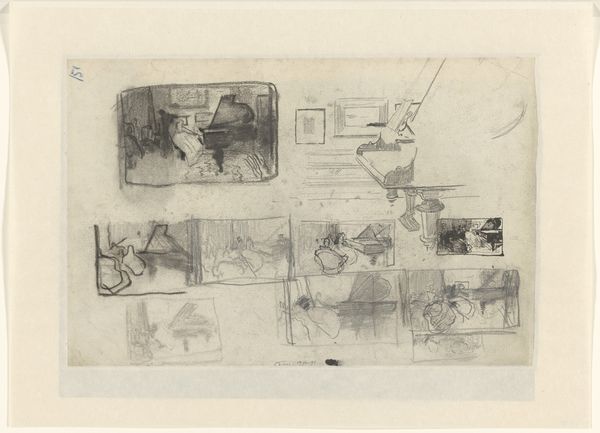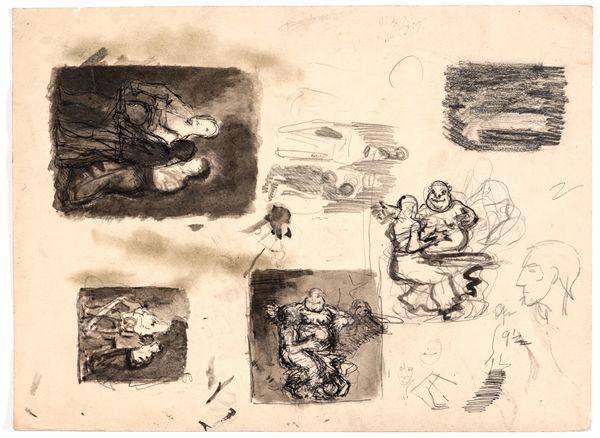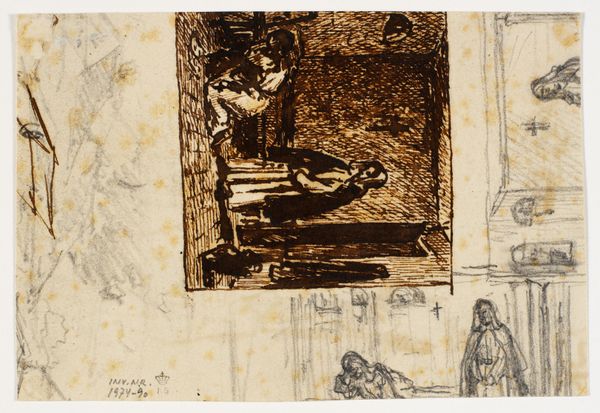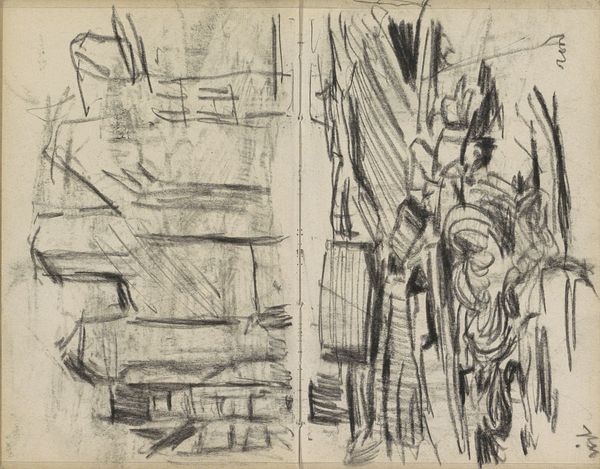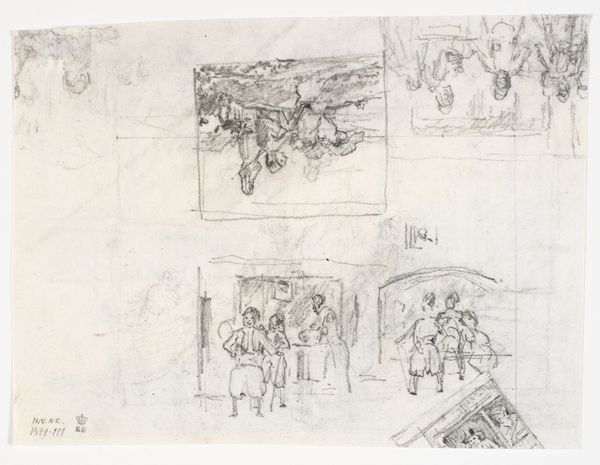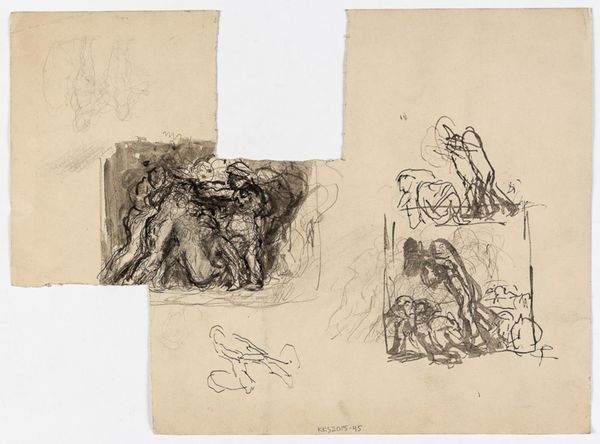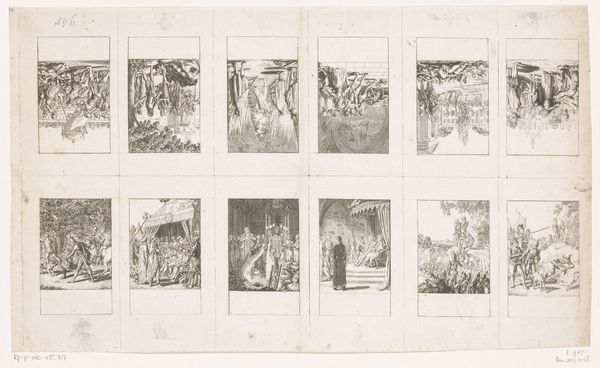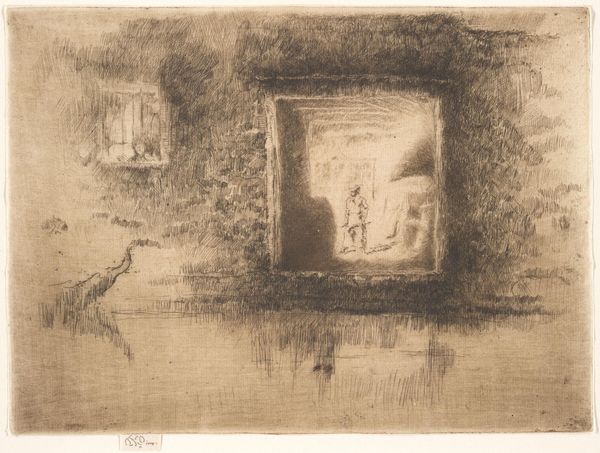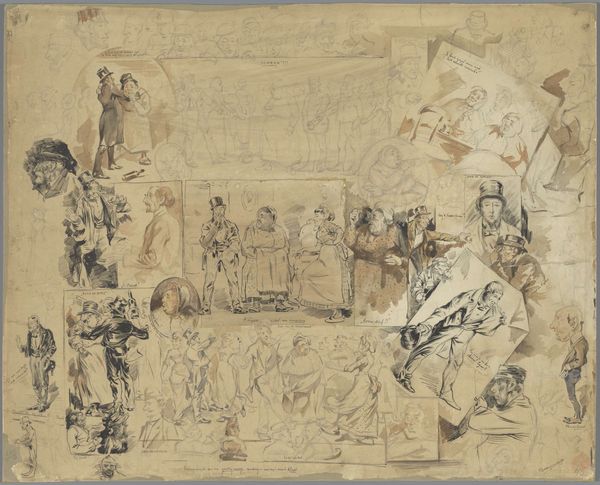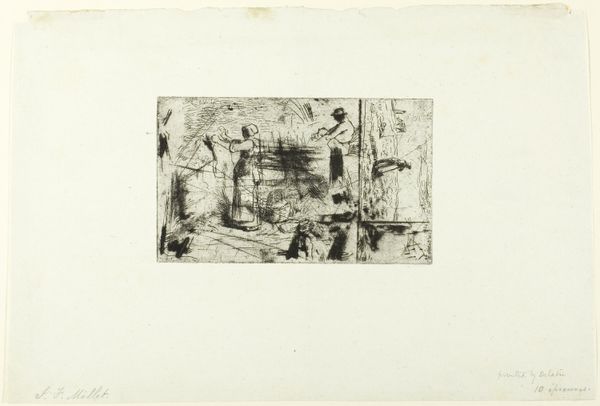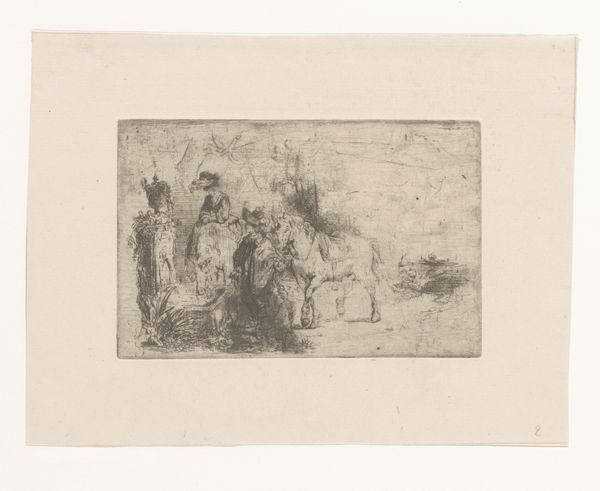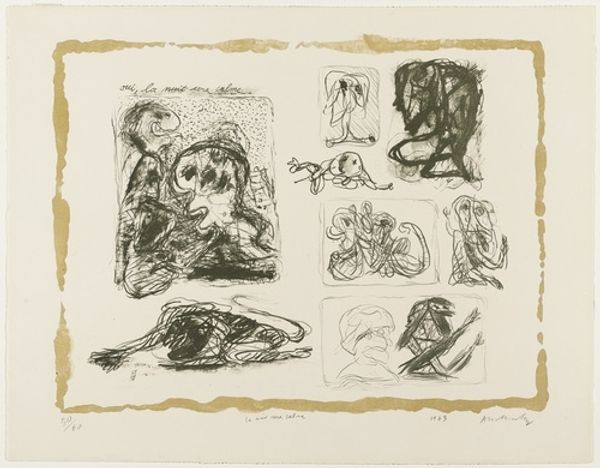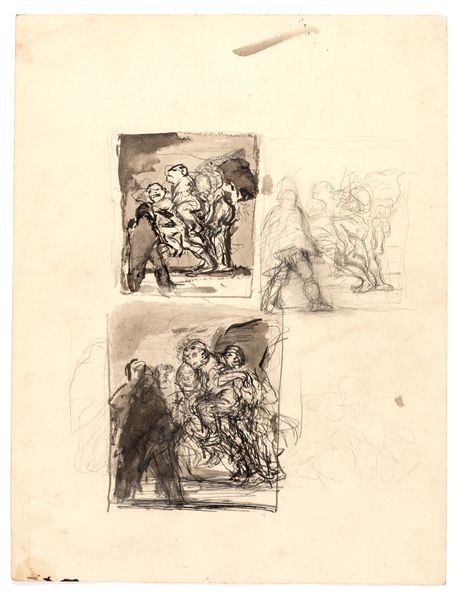
Composite plate: Woman and Children (a), Old Musician (b), Frying Merchant (c), Landscape (d), Landscape (e), Praying Monk (f), and Scavenger (g) 1843
0:00
0:00
drawing, print, etching
#
drawing
# print
#
etching
#
landscape
#
figuration
#
genre-painting
Dimensions: Sheet (Trimmed): 7 1/16 × 9 7/16 in. (18 × 24 cm) Plate: 3 5/8 × 4 5/16 in. (9.3 × 11 cm) Image (a): 1 7/8 × 1 3/8 in. (4.8 × 3.5 cm) Image (b): 13/16 × 9/16 in. (2 × 1.5 cm) Image (c): 13/16 × 11/16 in. (2 × 1.8 cm) Image (d): 1 in. × 2 3/4 in. (2.5 × 7 cm) Image (e): 1 9/16 × 1 15/16 in. (4 × 5 cm) Image (f): 1 1/16 × 7/8 in. (2.8 × 2.3 cm) Image (g): 1/2 × 11/16 in. (1.2 × 1.8 cm)
Copyright: Public Domain
Curator: This etching from 1843, titled "Composite plate: Woman and Children, Old Musician, Frying Merchant, Landscape, Landscape, Praying Monk, and Scavenger," showcases Charles Jacque's skill with the needle and acid. Editor: It's a fascinating compilation! The vignettes almost give the impression of snapshots into 19th-century French life. There’s a sense of intimacy despite the varying scales and subjects. Curator: Jacque's composite print reflects a rising interest in genre scenes, depicting everyday people and their environments. It catered to the expanding art market outside the established Salon system. Editor: You can really sense that emerging democratisation. Looking at the “Woman and Children,” the intimacy almost feels staged for a new bourgeois audience, eager to observe these curated glimpses into the lives of others. There's this delicate balance between revealing and concealing the realities of the working class. Curator: Precisely. The contrast between scenes such as the “Praying Monk” and the “Frying Merchant” also speak to changing social values and class structures of the period following the French Revolution. There is an emphasis on common working people which broke away from purely religious, historical, or aristocratic themes that dominated earlier art. Editor: I find myself drawn to the landscapes, especially how they interrupt the figuration. It subtly questions the position of humanity in this rapidly industrializing society, don't you think? The trees become almost a metaphor for the barriers facing certain people. Curator: That's insightful. Given Jacque’s later association with the Barbizon school and their focus on working life in rural landscapes, we can perceive this early work as testing such directions, portraying natural scenes with sensitivity and feeling. Editor: Exactly. By examining these pieces together, you grasp how the roles of different populations function against each other. It's as though this compilation asks us, “Whose story matters?". Curator: Charles Jacque really gives a social narrative using common folks within different settings that would resonate with his contemporaries, revealing his ambition of creating artworks for public discussions and art collections. Editor: Seeing these diverse narratives within the frame lets the observer think of whose history matters most in the 19th Century. This speaks a lot for the politics of art.
Comments
No comments
Be the first to comment and join the conversation on the ultimate creative platform.
